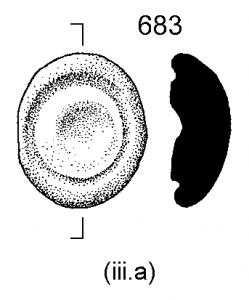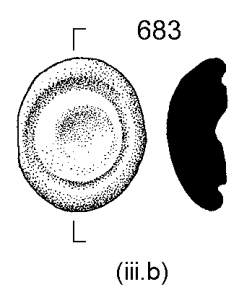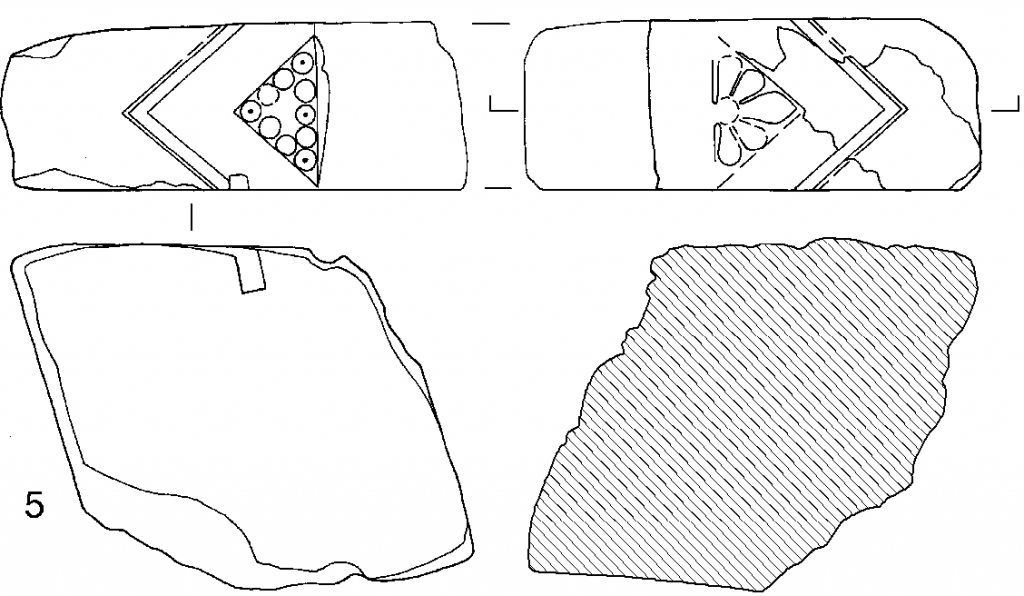Note:
images are converted from high-resolution 1 bit tiffs designed for publication – so lines wont look so great at this resolution
I was recently trying to standardise a large group of artifacts/finds and architectural stone drawings I drew years back. I’ve not done finds drawing for a long time now, but I was always unhappy with the conventions for showing sections.
We discussed this, and here’s what we came up with for this project:
________________________________
“L” shaped section-markers will be used to indicate the direction in which the section is being viewed:
1. where this is not fully clear, or
2. where it is non-standard
3. Note: an elevation may be included where helpful, but otherwise it is left out
_______________________________
To be more specific:
- where the section was horizontal ((ii) below), I kept the plan-view face to the top of the section.

(ii) - where the section was vertical (iii), I did not stick to any option i.e. plan-view face was sometimes shown — in section — adjacent to the plan-view (iii.a), and sometimes shown to the opposite side of the section (iii.b). Using the “L” section markers gave the freedom to do this.

Convention would have us showing the plan-view face on the opposite (furthest) side of the section (iii.b) – this is the opposite of how an end-view would be shown.

End-views are conventionally shown as if you were to simply rotate the object 90° and then draw the end view – see image (i) at top of post. This results in faces always being adjacent to each other. It was often clearer to show sections with the same orientation as end-views – see (iv) and (v) below.


All images in this post: © Copyright Government of Ireland 2013, 2017; from Ardfert Cathedral Excavations (not yet published).
Note: images converted from high-resolution 1bit tiffs – so not ideal for web.
